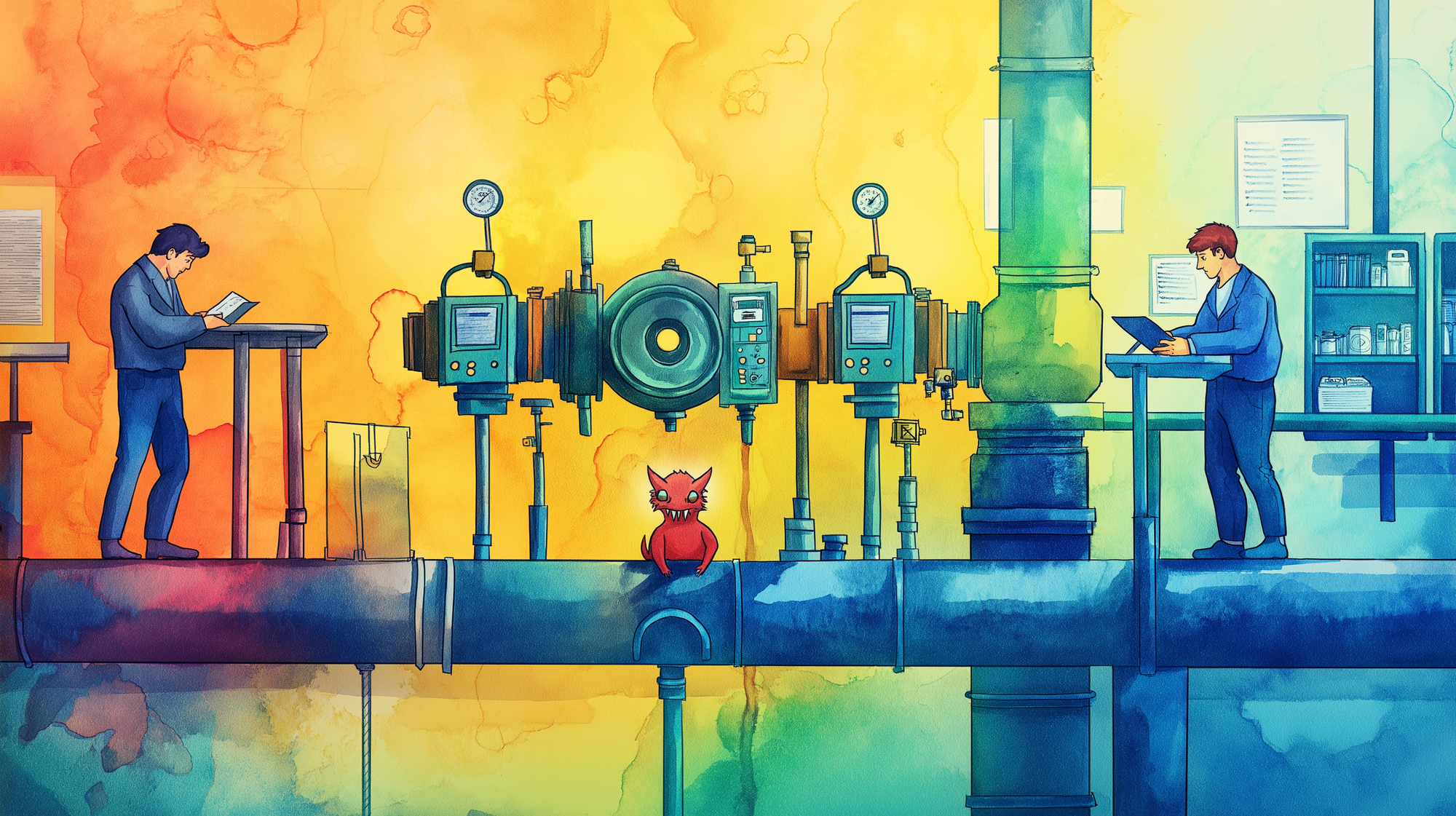Engineering culture
By training, most engineers hate leaks.

The story of how engineers reduced methane emissions without even trying
These innovations weren't introduced with climate concerns in mind — yet they've become an unexpected boon for reducing greenhouse gases. And, more than that, the engineering culture that resulted in these changes continues to lend itself to efforts to limit climate change.
The first and oldest innovation is what is known as Hot Tapping. Initially developed in the 1940s, it was in widespread use in the 1950s and 1960s and is still in use today. Hot tapping allows a pipeline to remain pressured up and in operation while a new connection is made, either to add a new lateral pipeline or other equipment like sensors or valves. To do this work without hot tapping would require the pipeline to be taken out of service and the natural gas in the line to be vented, usually into the atmosphere, which would be a major methane emission event.1
The motivation was to keep pipelines operating with much lower downtime to deliver gas to customers. Cost may have been a factor as well, although with natural gas prices being much lower in the 1950s (less than 10% of today’s costs) that would've been a secondary consideration.
Following the development of hot tapping, which minimized the need for large-scale methane venting during pipeline modifications, SCADA systems emerged as another major innovation in pipeline management. SCADA (Supervisory Control and Data Acquisition) allowed operators to monitor and control their systems better, further reducing emissions through enhanced leak detection and operational efficiency. Remote sensors on pipeline equipment communicating to a central location, SCADA systems allowed for remote monitoring and control of operating equipment: starting and stopping compressors, changing their speed, and opening and closing valves. While emissions were again not the reason for installing such systems, they had the effect of reducing pipeline methane emissions anyway.
In the early 1980s, two new technologies implemented on rotating equipment on pipelines were Magnetic Bearings and Dry Seals. Prior to their introduction, bearings and seals were oil-based, where oil provided lubrication to the contacting surfaces and also provided some barrier between the high pressure gas being transported and the atmosphere. The oil in these systems "entrained" natural gas and had to be "degassed" on a regular basis to remain effective. Degassing resulted in gas being vented to the atmosphere. Magnetic bearings and dry seals performed their functions without surfaces coming directly into contact and used no oil. Close tolerances and no need to degas resulted in improved equipment efficiency, reliability, and therefore cost effectiveness. Even though climate change was starting to be discussed in scientific circles, reduction in methane emissions was not an impetus to develop these technologies. 2
The last technology that served to reduce methane emissions was the use of Pull Down Compressors. Basically this technology involves temporarily installing a small compressor at one end of a piece of pipe that needs to be repaired. The pipe is isolated with valves and the compressor moves the gas from the pipe into an adjacent pipe or other vessel to lower the pressure in the pipe needing repair. By doing this, the amount of gas that is vented to atmosphere when the pipe is ultimately taken out of service is much lower than it would've been if the line were simply vented.3
At the time, the primary motivation was minimizing downtime, which directly affected a company's ability to deliver natural gas reliably to customers. This reduction in downtime not only kept revenue streams consistent but also reduced operational costs tied to venting and maintenance. However, the real reasons are not quite so straightforward and herein lies the mystery.
What's puzzling is that these innovations didn't immediately benefit the companies financially. Pipelines operate on a "cost of service" model, where costs are passed on to the customer. So, why did they push forward with these technologies when the saved gas and increased uptime didn't directly improve their bottom lines? It was driven by a different mindset — a time when engineers and executives were focused on doing the right thing, innovating because they could, but not because it was mandated.
Ultimately, these technologies were a product of their time — developed to improve efficiency, lower costs, and minimize downtime. However, their legacy has turned out to be much more significant. By reducing methane emissions, these innovations have played an unexpected role in addressing one of the most critical environmental challenges of our time.
Readings
- US EPA, OAR. "Pipeline Hot Taps." Data and Tools, July 28, 2023. https://www.epa.gov/natural-gas-star-program/pipeline-hot-taps.
- Foster, E. G., V. Kulle, and R. A. Peterson. "The Application of Active Magnetic Bearings to a Natural Gas Pipeline Compressor." American Society of Mechanical Engineers,New York, NY, January 1, 1986. https://www.osti.gov/biblio/5194679.
- Hladun, A. R., F. Wong, and S. A. Dunn. "The Performance of Portable Evacuation Compressors in Gas Transmission Service." American Society of Mechanical Engineers Digital Collection, 2015. https://doi.org/10.1115/81-GT-140.
